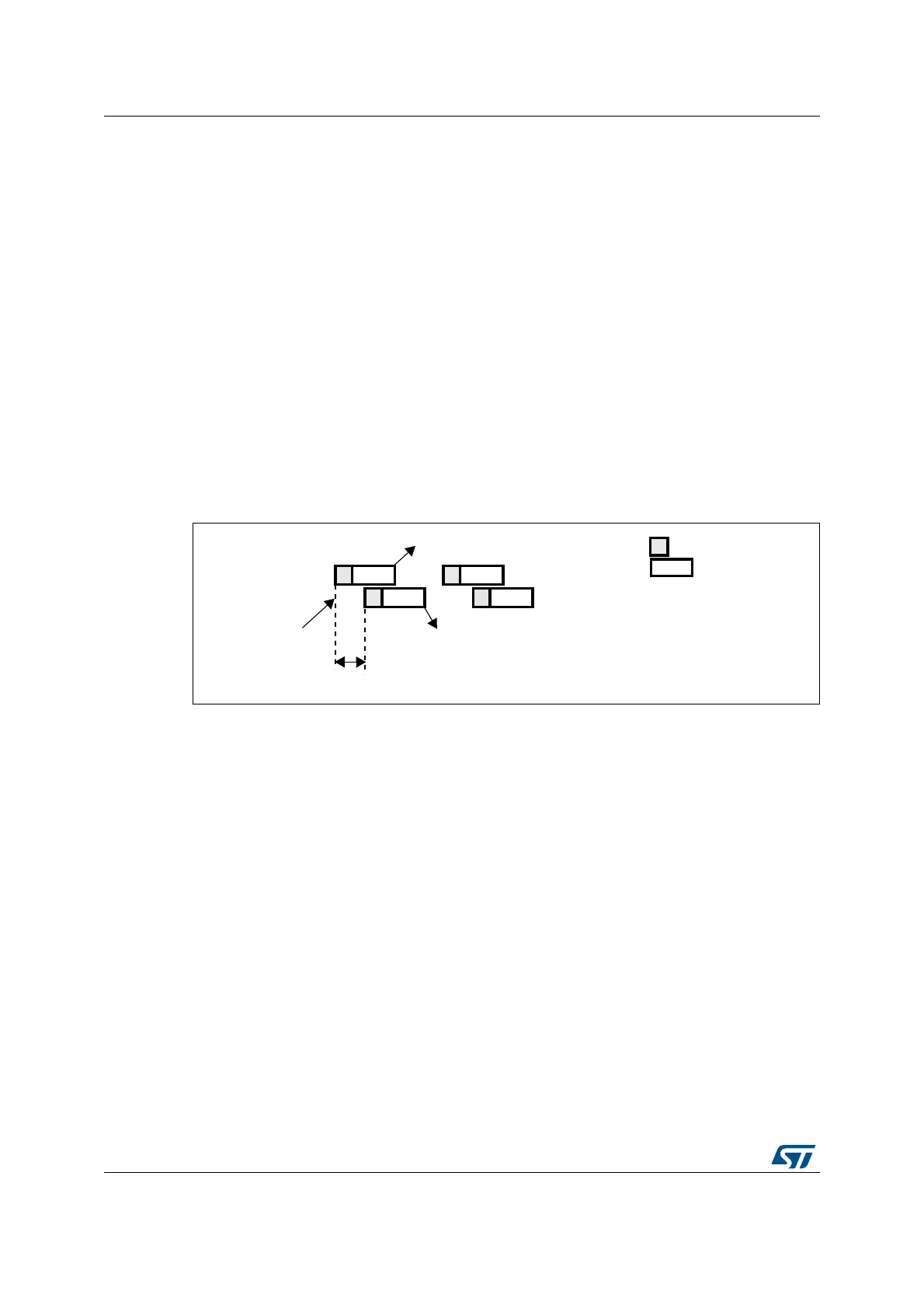Analog-to-digital converter (ADC) RM0390
376/1328 RM0390 Rev 4
The minimum delay which separates 2 conversions in interleaved mode is configured in the
DELAY bits in the ADC_CCR register. However, an ADC cannot start a conversion if the
complementary ADC is still sampling its input (only one ADC can sample the input signal at
a given time). In this case, the delay becomes the sampling time + 2 ADC clock cycles. For
instance, if DELAY = 5 clock cycles and the sampling takes 15 clock cycles on both ADCs,
then 17 clock cycles will separate conversions on ADC1 and ADC2).
If the CONT bit is set on both ADC1 and ADC2, the selected regular channels of both ADCs
are continuously converted.
Note: If the conversion sequence is interrupted (for instance when DMA end of transfer occurs),
the multi-ADC sequencer must be reset by configuring it in independent mode first (bits
DUAL[4:0] = 00000) before reprogramming the interleaved mode.
After an EOC interrupt is generated by ADC2 (if enabled through the EOCIE bit) a 32-bit
DMA transfer request is generated (if the DMA[1:0] bits in ADC_CCR are equal to 0b10).
This request first transfers the ADC2 converted data stored in the upper half-word of the
ADC_CDR 32-bit register into SRAM, then the ADC1 converted data stored in the register’s
lower half-word into SRAM.
Figure 84. Interleaved mode on 1 channel in continuous conversion mode: dual ADC
mode
Triple ADC mode
After an external trigger occurs:
• ADC1 starts immediately and
• ADC2 starts after a delay of several ADC clock cycles
• ADC3 starts after a delay of several ADC clock cycles referred to the ADC2 conversion
The minimum delay which separates 2 conversions in interleaved mode is configured in the
DELAY bits in the ADC_CCR register. However, an ADC cannot start a conversion if the
complementary ADC is still sampling its input (only one ADC can sample the input signal at
a given time). In this case, the delay becomes the sampling time + 2 ADC clock cycles. For
instance, if DELAY = 5 clock cycles and the sampling takes 15 clock cycles on the three
ADCs, then 17 clock cycles will separate the conversions on ADC1, ADC2 and ADC3).
If the CONT bit is set on ADC1, ADC2 and ADC3, the selected regular channels of all ADCs
are continuously converted.
Note: If the conversion sequence is interrupted (for instance when DMA end of transfer occurs),
the multi-ADC sequencer must be reset by configuring it in independent mode first (bits
DUAL[4:0] = 00000) before reprogramming the interleaved mode.
In this mode a DMA request is generated each time 2 data items are available, (if the
DMA[1:0] bits in the ADC_CCR register are equal to 0b10). The request first transfers the
#(
#(
!$#
!$#
4RIGGER
%NDOFCONVERSIONON!$#
#(
#(
!$##,+
CYCLES
%NDOFCONVERSIONON!$#
#ONVERSION
3AMPLING
AI

